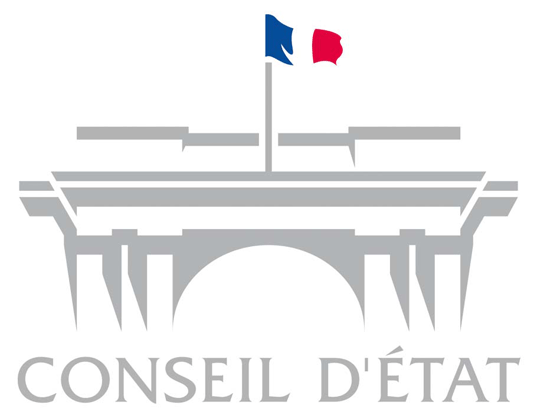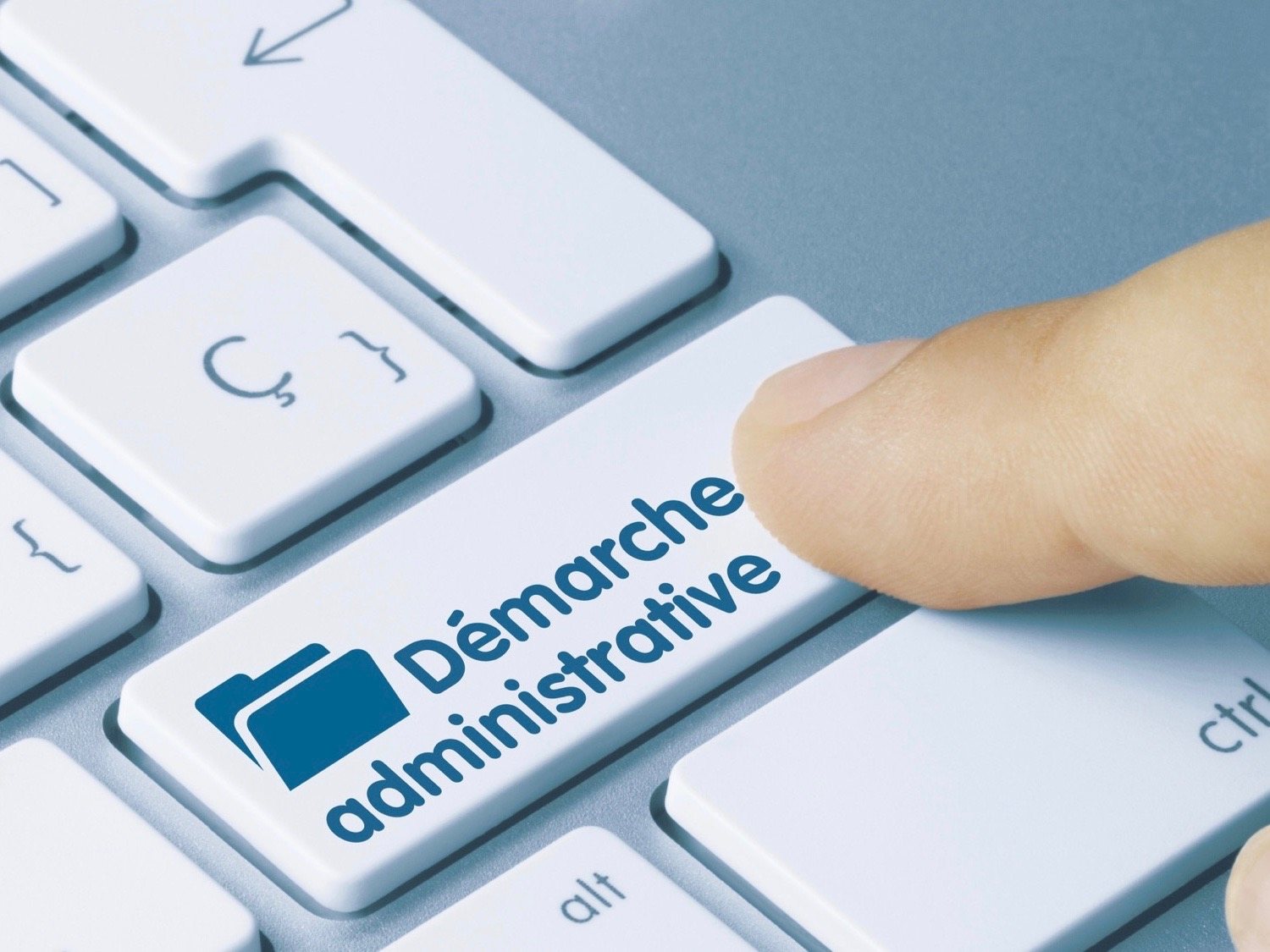The dematerialization of public services has been unfolding for two decades, with a strong acceleration recently. The Public Action 2022 program provides for the dematerialization of the 250 most common administrative procedures.
The Digital Barometer 2022 sheds light on the inequalities that persist in the face of dematerialized public services. In 2022, the proportion of people who at least sometimes have difficulty completing administrative procedures online will increase to 54%, 16% more than in 2020.
Chronology of the use of online administrative procedures from 2016 to 2021
The Digital Barometer follows, year by year, the way in which the French take on the possibility (and often the obligation) to carry out administrative procedures online.
The Digital Barometer observed in 2016 a turning point in the use of the Internet for administrative and tax procedures: this has increased significantly, from 53% in 2015 to 62% in 2016. In 2016, 90% of people who had completed administrative procedures online felt that "it was easy" (41% considered it "very easy" and 49% "fairly easy"). However, in 2016, there was a stagnation in the proportion of low-income people who had done administrative procedures on the Internet. The main result is that about 16% of adults declared themselves unable to obtain administrative information on the Internet, to download or fill in administrative forms online in 2016. 40% of French people said they were worried about completing administrative procedures online and 28% wanted to be accompanied in local places.
The 2017 edition also recorded a clear increase in the proportion of people who have carried out administrative procedures online: 67% compared to 62% in 2016. This increase was observed in all age groups and for all income levels. However, significant differences remained. While 81% of high-income earners had taken steps online, only 59% of low-income earners did so. The gap was even more pronounced when degree level was taken into account: 90% of university graduates had taken steps online, compared to only 30% of non-graduates. Non-graduates were thus the only category of population for which online procedures did not progress in 2016.
In 2018for the first time, the proportion of individuals using public digital services decreased: 65% compared to 67% in 2017. The gaps widened depending on the level of education: 9 out of 10 university graduates used the Internet to carry out their administrative and tax procedures, compared to only 26% of non-graduates (26%) and 63% of those with a high school diploma. Above all, 36% of people said they were worried about the dematerialization of administrative procedures. This concern was mainly correlated to age, degree and income. The over 60s were nearly one in two to feel worried, as were 59% of non-graduates. More worrying: the use of online administrative procedures did not dispel anxiety: 27% of people who had used online procedures expressed some anxiety.
The 2019 edition of the Digital Barometer had undertaken, through new questions, to understand how the public's relations with public administrations had evolved. To the question "in recent years, regarding your relations with public administrations, would you say that they have become simpler, more complex or have not changed", only 19% of respondents answered that they have become simpler and 37% that they have become more complex. This judgement varied according to age and social position. 50% of those aged 60-69 and 40% of those with low incomes judged that these relationships had become more complex.
While 32% of French people said they did not know any obstacles to using the administration, a majority mentioned different types of obstacles: the complexity of the procedures for 25% of respondents (" The administrative procedures are too complicated in themselves") and the lack of comfort with computers for 20% of them.
18% mentioned the difficulty of contacting a contact person to assist them in their procedures, 18% cited poor design of administrative sites. In addition, 14% pointed to too many administrative sites. Finally, 13% "lacked information about the procedures " while 9% reported " difficulties in managing their accounts, logins and passwords ". The complexity of the procedures themselves was highlighted by the oldest people and by those without diplomas.
Even those who are most at ease with computers and the Internet, and therefore best equipped to overcome the complexity of online procedures, expressed a form of annoyance. 21% of university graduates deplored " the difficulty of contacting a person to assist them with their procedures". Similarly, 24% of 18-24 year olds mentioned the poor design of administrative sites.
The 2021 edition of the Barometer (conducted during the Covid-19 health crisis) recorded a 5-point increase in the use of online administrative procedures, from 66% to 71% in one year. While 56% of respondents said that during the lockdown they were able to complete their online procedures on their own, 30% had been forced to ask for help. 9% had not managed to do so, either because they had given up (5%) or because they never used computer and digital tools (4%). The 2021 Barometer questionnaire also asked respondents to evaluate their skills in completing administrative procedures online and their office automation skills. It was found that more people (72%) said they were generally competent to carry out administrative procedures online (26% said they were very competent and 46% fairly competent) than to use office tools (63%). Regardless of the level of education or standard of living, competence in completing administrative procedures online always exceeded competence in using office tools.
However, the analysis by age revealed some differences. The 18-24 year olds declared themselves better able to use digital tools (83%, +20 points compared to the general population) than to carry out administrative procedures online (64%, -8 points compared to the general population).
In 2022, stabilization of the proportion of French people having carried out an administrative procedure online (71%)
After an increase of 5 points in the 2021 edition, the Digital Barometer records a stabilization of the use of e-administration: 71% of respondents have completed an administrative process online in the last twelve months.
However, this overall stability masks differentiated developments according to multiple socio-demographic factors
By age of respondent
There was a 22-point increase in the 12-17 age group, a 3-point decrease in the 60-69 age group and a 12-point decrease in the 70+ age group.
"The over-60s had used e-government much more in 2020," comment the Credoc analysts."Part of the spike observed in 2020 in this population was undoubtedly related to the Covid-19 vaccination, which is mandatory or highly recommended among seniors depending on the period, required as part of the health pass, and largely carried out via online appointments on the Doctolib platform in partnership with the Ministry of Health."
The level of education has a strong impact on the use of dematerialized public services
Only 42% of non-graduates have carried out an administrative procedure online in the last twelve months, compared to 82% of university graduates.
The gap also widens according to the size of the agglomeration
With a drop of 8 points in the proportion of people who have carried out an administrative procedure on the Internet among residents of rural communities.
More people are seeking help with online procedures
The multiplication of online procedures and the increase in 2022 in the number of people using the digital channel for their administrative procedures is associated with an increase in the number of people experiencing difficulties.
In fact, in 2022, there will be an increase in the proportion of people who, at least sometimes, encounter difficulties in carrying out online procedures (54%, +16 points).
This increase is in line with the increase in the number of complaints received by the delegates and lawyers of the Defender of Rights.
Faced with these difficulties, the most popular solution is to ask for explanations in order to succeed in carrying out the procedure alone (40%, +16 points), with few people relying entirely on another person to do the procedure for them (14%).
The difficulties in carrying out procedures do not only concern the groups that are furthest from the digital world. In particular, young adults, who are very comfortable with uses related to leisure, information or communication, are more troubled when it comes to formalities. Thus 76% of 18-24 year olds say they are not always able to carry out their procedures online (+13 points), compared to 53% of those aged 70 and over (+10 points), and 48% of those aged 40-59 (+17 points). People who prefer to let someone else do the work are more numerous among both 18-24 year olds (21%) and those aged 70 and over (23%).
Linked articles
-
Inclusion
-
Inclusion
-
Inclusion
-
Inclusion
-
Inclusion
Dematerialization of public services: a connectivity obligation that weighs on the most fragile publics....

Dematerialization raises questions for social workers about the scope of their activity and the updating of their professional practices

Dematerialization of public services, where do we stand? Findings and recommendations of the Human Rights Defender [Report]

Dematerialization of public services: the Council of State rules on residence permit applications and sets a general framework

Dématérialisation, difficultés d’accès aux droits et de dialogue avec les administrations, «facteurs de crispation sociale»


Online administrative procedures: stabilization of use, persistence of inequalities and increase in difficulties
The dematerialization of public services has been unfolding for two decades, with a strong acceleration recently. The Public Action 2022 program provides for the dematerialization of the 250 most common administrative procedures.
The Digital Barometer 2022 sheds light on the inequalities that persist in the face of dematerialized public services. In 2022, the proportion of people who at least sometimes have difficulty completing administrative procedures online will increase to 54%, 16% more than in 2020.
Chronology of the use of online administrative procedures from 2016 to 2021
The Digital Barometer follows, year by year, the way in which the French take on the possibility (and often the obligation) to carry out administrative procedures online.
The Digital Barometer observed in 2016 a turning point in the use of the Internet for administrative and tax procedures: this has increased significantly, from 53% in 2015 to 62% in 2016. In 2016, 90% of people who had completed administrative procedures online felt that "it was easy" (41% considered it "very easy" and 49% "fairly easy"). However, in 2016, there was a stagnation in the proportion of low-income people who had done administrative procedures on the Internet. The main result is that about 16% of adults declared themselves unable to obtain administrative information on the Internet, to download or fill in administrative forms online in 2016. 40% of French people said they were worried about completing administrative procedures online and 28% wanted to be accompanied in local places.
The 2017 edition also recorded a clear increase in the proportion of people who have carried out administrative procedures online: 67% compared to 62% in 2016. This increase was observed in all age groups and for all income levels. However, significant differences remained. While 81% of high-income earners had taken steps online, only 59% of low-income earners did so. The gap was even more pronounced when degree level was taken into account: 90% of university graduates had taken steps online, compared to only 30% of non-graduates. Non-graduates were thus the only category of population for which online procedures did not progress in 2016.
In 2018for the first time, the proportion of individuals using public digital services decreased: 65% compared to 67% in 2017. The gaps widened depending on the level of education: 9 out of 10 university graduates used the Internet to carry out their administrative and tax procedures, compared to only 26% of non-graduates (26%) and 63% of those with a high school diploma. Above all, 36% of people said they were worried about the dematerialization of administrative procedures. This concern was mainly correlated to age, degree and income. The over 60s were nearly one in two to feel worried, as were 59% of non-graduates. More worrying: the use of online administrative procedures did not dispel anxiety: 27% of people who had used online procedures expressed some anxiety.
The 2019 edition of the Digital Barometer had undertaken, through new questions, to understand how the public's relations with public administrations had evolved. To the question "in recent years, regarding your relations with public administrations, would you say that they have become simpler, more complex or have not changed", only 19% of respondents answered that they have become simpler and 37% that they have become more complex. This judgement varied according to age and social position. 50% of those aged 60-69 and 40% of those with low incomes judged that these relationships had become more complex.
While 32% of French people said they did not know any obstacles to using the administration, a majority mentioned different types of obstacles: the complexity of the procedures for 25% of respondents (" The administrative procedures are too complicated in themselves") and the lack of comfort with computers for 20% of them.
18% mentioned the difficulty of contacting a contact person to assist them in their procedures, 18% cited poor design of administrative sites. In addition, 14% pointed to too many administrative sites. Finally, 13% "lacked information about the procedures " while 9% reported " difficulties in managing their accounts, logins and passwords ". The complexity of the procedures themselves was highlighted by the oldest people and by those without diplomas.
Even those who are most at ease with computers and the Internet, and therefore best equipped to overcome the complexity of online procedures, expressed a form of annoyance. 21% of university graduates deplored " the difficulty of contacting a person to assist them with their procedures". Similarly, 24% of 18-24 year olds mentioned the poor design of administrative sites.
The 2021 edition of the Barometer (conducted during the Covid-19 health crisis) recorded a 5-point increase in the use of online administrative procedures, from 66% to 71% in one year. While 56% of respondents said that during the lockdown they were able to complete their online procedures on their own, 30% had been forced to ask for help. 9% had not managed to do so, either because they had given up (5%) or because they never used computer and digital tools (4%). The 2021 Barometer questionnaire also asked respondents to evaluate their skills in completing administrative procedures online and their office automation skills. It was found that more people (72%) said they were generally competent to carry out administrative procedures online (26% said they were very competent and 46% fairly competent) than to use office tools (63%). Regardless of the level of education or standard of living, competence in completing administrative procedures online always exceeded competence in using office tools.
However, the analysis by age revealed some differences. The 18-24 year olds declared themselves better able to use digital tools (83%, +20 points compared to the general population) than to carry out administrative procedures online (64%, -8 points compared to the general population).
In 2022, stabilization of the proportion of French people having carried out an administrative procedure online (71%)
After an increase of 5 points in the 2021 edition, the Digital Barometer records a stabilization of the use of e-administration: 71% of respondents have completed an administrative process online in the last twelve months.
However, this overall stability masks differentiated developments according to multiple socio-demographic factors
By age of respondent
There was a 22-point increase in the 12-17 age group, a 3-point decrease in the 60-69 age group and a 12-point decrease in the 70+ age group.
"The over-60s had used e-government much more in 2020," comment the Credoc analysts."Part of the spike observed in 2020 in this population was undoubtedly related to the Covid-19 vaccination, which is mandatory or highly recommended among seniors depending on the period, required as part of the health pass, and largely carried out via online appointments on the Doctolib platform in partnership with the Ministry of Health."
The level of education has a strong impact on the use of dematerialized public services
Only 42% of non-graduates have carried out an administrative procedure online in the last twelve months, compared to 82% of university graduates.
The gap also widens according to the size of the agglomeration
With a drop of 8 points in the proportion of people who have carried out an administrative procedure on the Internet among residents of rural communities.
More people are seeking help with online procedures
The multiplication of online procedures and the increase in 2022 in the number of people using the digital channel for their administrative procedures is associated with an increase in the number of people experiencing difficulties.
In fact, in 2022, there will be an increase in the proportion of people who, at least sometimes, encounter difficulties in carrying out online procedures (54%, +16 points).
This increase is in line with the increase in the number of complaints received by the delegates and lawyers of the Defender of Rights.
Faced with these difficulties, the most popular solution is to ask for explanations in order to succeed in carrying out the procedure alone (40%, +16 points), with few people relying entirely on another person to do the procedure for them (14%).
The difficulties in carrying out procedures do not only concern the groups that are furthest from the digital world. In particular, young adults, who are very comfortable with uses related to leisure, information or communication, are more troubled when it comes to formalities. Thus 76% of 18-24 year olds say they are not always able to carry out their procedures online (+13 points), compared to 53% of those aged 70 and over (+10 points), and 48% of those aged 40-59 (+17 points). People who prefer to let someone else do the work are more numerous among both 18-24 year olds (21%) and those aged 70 and over (23%).
Labo Société Numérique




